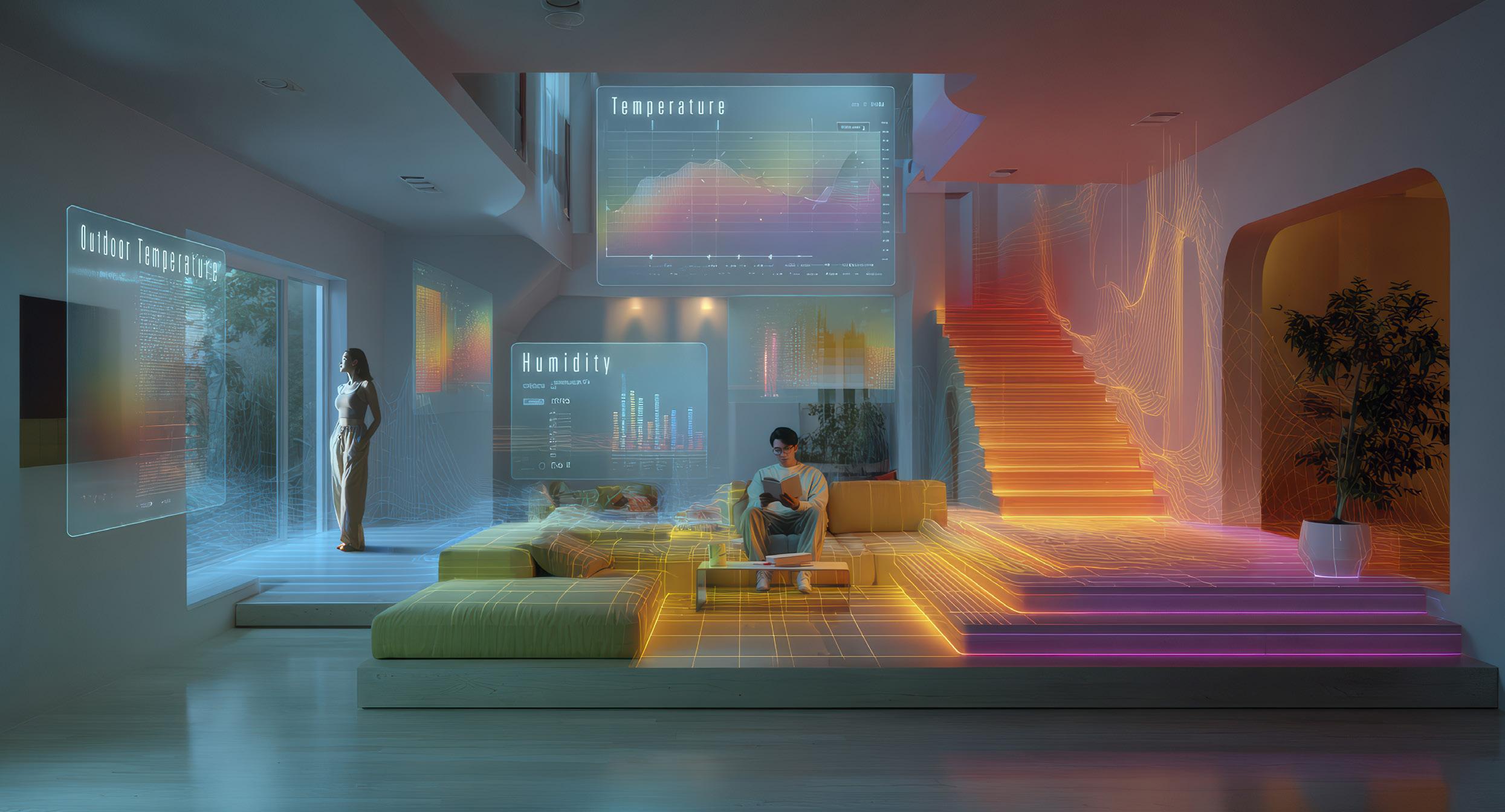Modelling personal comfort: a smart thermostat that learns what temperature you like

ComfortGPT uses generative pre-trained models and a transformer architecture to predict individual thermostat preferences over time.
There’s a big chance that you’ve heard of — and used — ChatGPT. Ask the large-language-model-powered chat bot to plan a four-day getaway to Bangkok, and it’ll hand you a polished itinerary complete with temples and floating markets, punctuated with suggestions for boat noodles and mango sticky rice. Ask it about the origins of the universe, and it’ll churn out an impressively insightful response. (Though some fact-checking is still warranted.)
Issue 06 | Aug 2025

with his PhD
But ask it to analyse the temperature you actually want in your workspace — be it on a rainy day, after a long commute, or when you’re feeling just a bit off — and it hits a wall.
Meet ComfortGPT. Developed by Assistant Professor Ali Ghahramani and PhD student Mr Chen Kai, both from the Department of the Built Environment, College of Design and Engineering, National University of Singapore, this transformer-based machine-learning model does what conventional thermal comfort tools can’t: it learns your temperature preferences over time — and adapts to them. By doing so, it reduces unnecessary heating or cooling, boosting energy efficiency while keeping occupants comfortable. The duo’s work was carried out at the Building Robotics Laboratory at CDE and was published in Building and Environment
Perceptive, not reactive
Thermostats were built to be reactive. Feeling hot or cold? Walk to the wall, or pick up the controller, and make a change. Meanwhile, large-scale air-conditioning systems, like those used in shopping malls, operate on generalised comfort models that treat everyone more or less the same.
“Comfort is personal and dynamic. A temperature you find cooling on a humid day might feel chilly after consecutive days of rain,” says Asst Prof Ghahramani. “Asking users to constantly report how they feel, as many research-based comfort models do, quickly leads to fatigue and patchy data.”
ComfortGPT takes a different tack. Instead of surveys, it learns from real behaviour. For example, how occupants adjust thermostats over time, and in different conditions. The researchers trained their system using a huge dataset from ECOBEE’s “Donate Your Data” programme, containing anonymised logs from over 100,000 thermostats across North America, collected over years and at five-minute intervals.
“We clustered these thermostat behaviours to create comfort archetypes, which are groups of users with similar temperature preferences and adjustment habits,” adds Mr Chen, who’s also the paper’s first author. Some like it cooler. Others prefer slightly toasty rooms, even when it’s warm out. Some change with seasonal weather.
“When a new user interacts with the thermostat — even just once — ComfortGPT matches their behaviour to the closest archetype and begins making predictions.”
“When a new user interacts with the thermostat — even just once — ComfortGPT matches their behaviour to the closest archetype and begins making predictions,” added Asst Prof Ghahramani, highlighting how the system learns and adapts from the get-go.
The model also uses a transformer mechanism — the same type of architecture powering ChatGPT — to tease out how recent and relevant each past interaction is. That means the system is not just learning what you liked once, but what you’re likely to prefer next, depending on changes in weather or routine.
That warm, fuzzy feeling
In testing, ComfortGPT predicted user setpoints with a mean error of just 0.65°C. That’s close enough for practical use in most buildings, and a significant improvement over traditional adaptive models, which tend to fall short in airconditioned environments. By adjusting setpoints more precisely in response to external conditions, the model helps avoid overcooling or overheating, delivering conditioned air only when and where it’s needed, thus improving energy efficiency in the process.
To be able to personalise comfort without constant user input is an exciting prospect. While this study was mostly focused on residential settings, the team is also exploring multi-user applications, including a robotic fan system that delivers targeted cooling to individuals in shared spaces. In parallel, they are developing ways to capture short-term changes in comfort using physiological signals, such as skin temperature patterns measured through infrared thermography. The team has also made the code open-source, inviting developers to build on the work.
“We’ve seen strong interest from stakeholders like Trane Technologies, who are exploring how this system could be integrated into future smart-building applications,” says Asst Prof Ghahramani. “For the first time, we have a scalable, data-driven method to make thermostats genuinely smart — able to adjust in real time to individual preferences while optimising for comfort and energy efficiency.”
